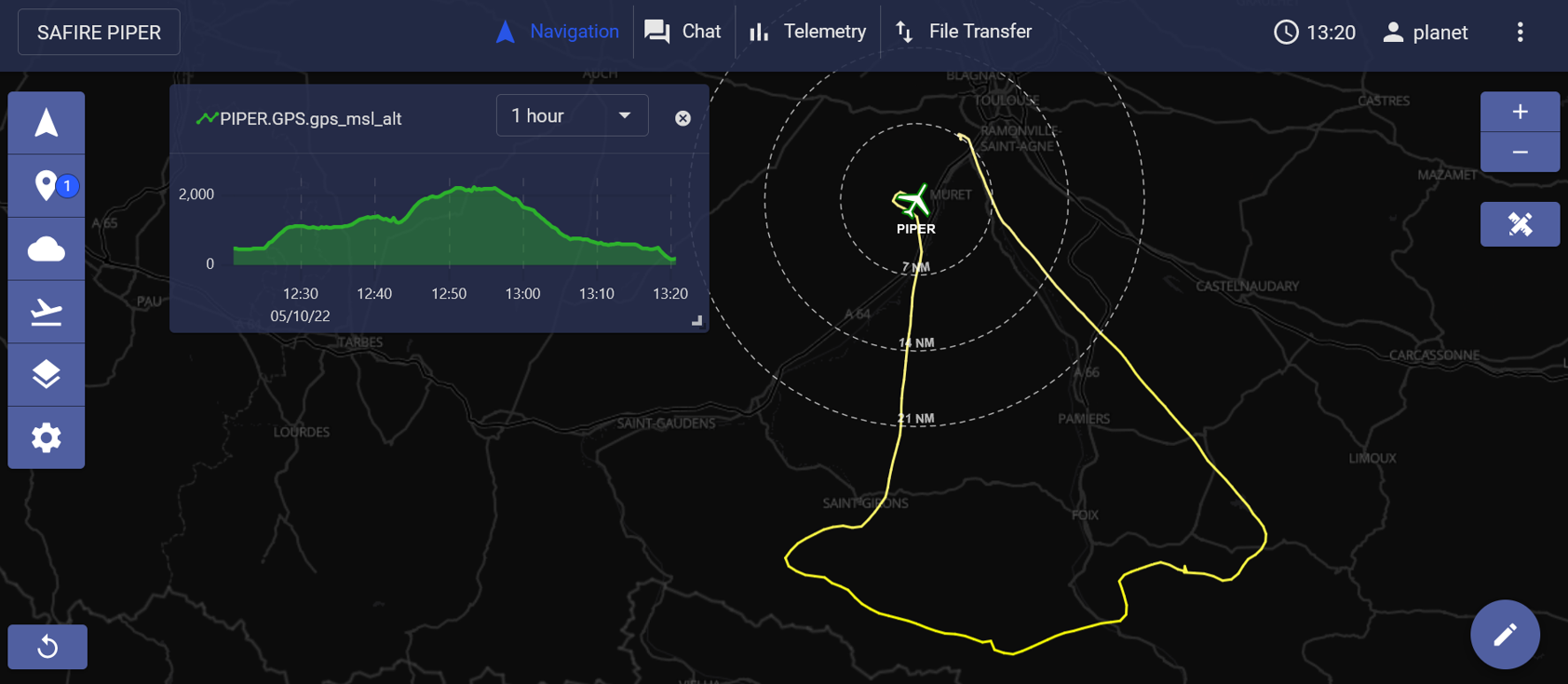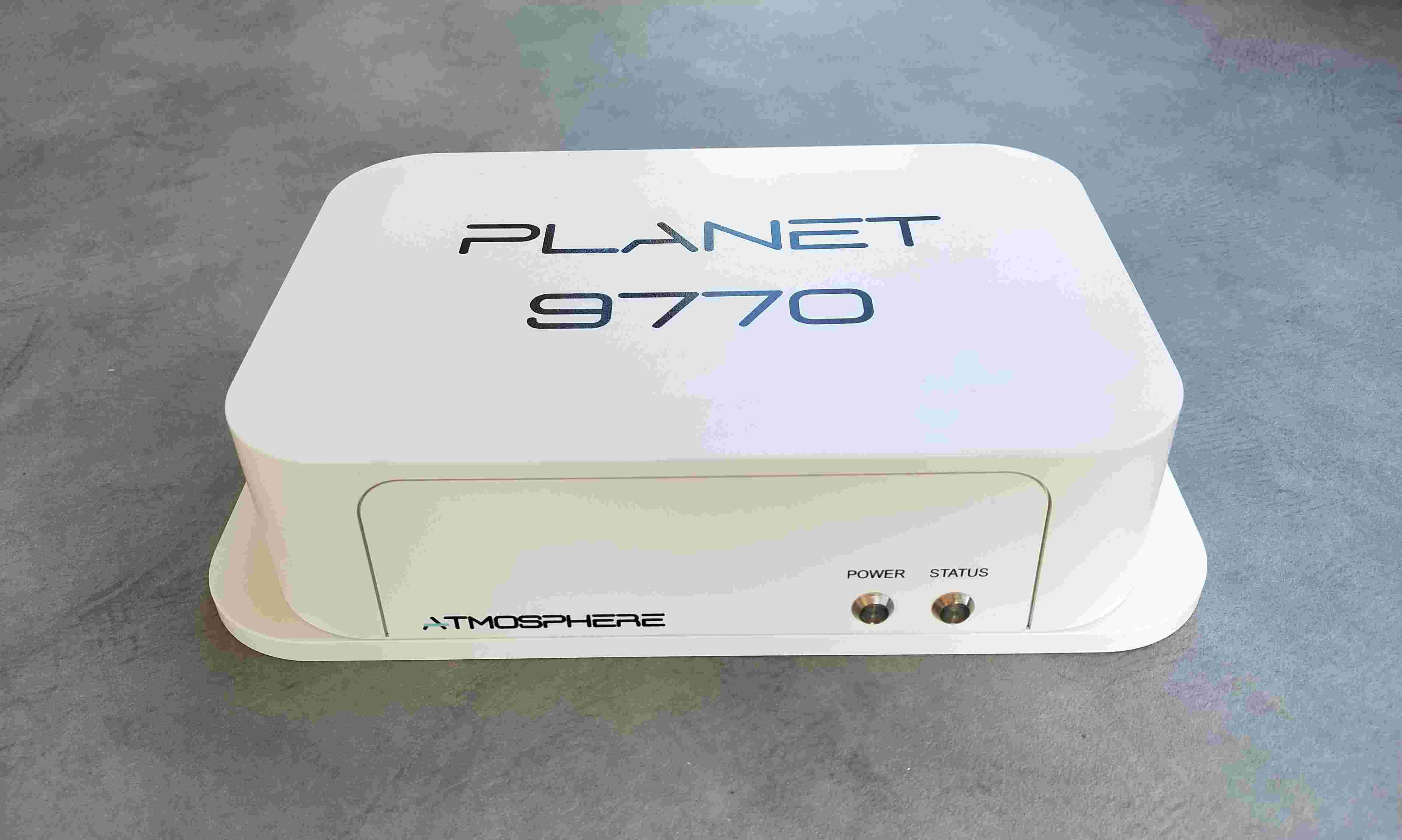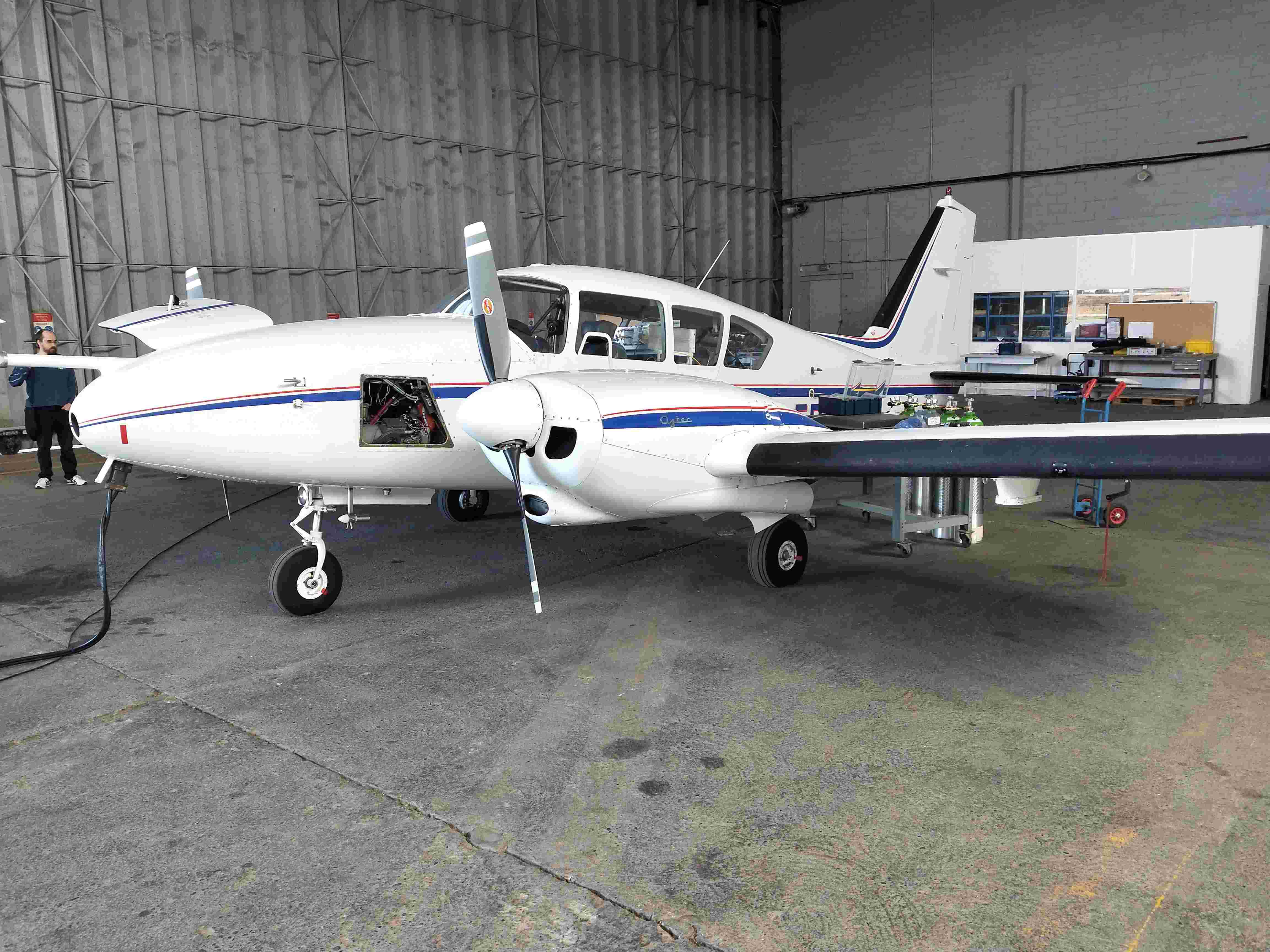
ATMOSPHERE, a company providing satellite connectivity solutions to the aerospace sector, has developed a pioneering system that brings cutting-edge services to aerial work operators. Created under ESA’s Business Applications and Space Solutions (BASS) programme, the system uses satellite connectivity to offer real-time information exchange and boost flight mission efficiency.
With satellite connectivity constantly evolving, the ATMOSPHERE team identified a need for bringing advanced features and improved performance to aerial flight missions for users. Building on their PLANET service developed under the ARTES Competitiveness and Growth programme, the new system uses satellite communications (SatCom) to take air-to-ground connectivity for aircraft to the next level. It utilises ATMOSPHERE’s PLANET 9770 terminal, which is built around the next-generation Iridium Certus 9770 modem, providing more than 10 times the capacity of traditional terminals.

ATMOSPHERE’s latest system can be used to operate diverse platforms, including aircraft, rotorcraft, Unmanned Aerial Vehicles (UAVs) and balloons during special missions, such as flight testing and surveillance flights. The new technology offers bulk on-board telemetry, together with collaboration tools such as tracking, chat functions, geotagging and file transfer, and can support remote operations during single- or multiple-ship missions. The work of the project team also ensured improved service levels, ease of use and alignment with industry standards.
The system consists of two key components: the onboard and the ground segments. The onboard segment’s server links with SatCom and a bespoke inbuilt application acquires and optimises the assimilated data, such as external telemetry. The onboard segment then transmits the data to the ground segment, which stores and presents it to ground users, using APIs (Application Programming Interfaces) to enable the integration of third-party applications.

SatCom plays a central role in the overall system architecture of the service, providing the link between onboard and ground segments during flights and offering global in-flight connectivity. Satellite Navigation (SatNav) provides essential carrier tracking and geo-location, while Earth Observation (SatEO) transmits real-time weather monitoring during operations.
ATMOSPHERE put the new system through its paces, deploying it in pilot operations on fixed wing aircraft and UAVs. The team carried out 14 flights with SAFIRE’s ATR42 fixed wing aircraft, testing system performance and generating early user feedback, and 6 flights on the Dassault F6X, providing further testing of the system at high latitudes. ATMOSPHERE also performed UAV pilot flight tests using multirotors, testing reliability, gaining operational experience and showcasing the new solution.
“ATMOSPHERE’s new system has all the hallmarks of a game-changing solution for aerial flight missions,” said Arnaud Runge, Technical Officer for the project, who also holds a commercial pilot licence. “With ESA’s support, it offers enhanced technological capability, improved performance levels and an array of pioneering features. Alongside the PLANET 9770 terminal, I am confident it will have a significant impact on the sector.”
“ESA’s continuous support was key in delivering mature innovation to the market,” added ATMOSPHERE’s Managing Director, Jean Marc Gaubert. “ATMOSPHERE has been one of the very first to bring Iridium Certus technology to the aviation market. ARTES programme assets, including visibility and credibility, are now translating into business success in Europe and beyond.”
ATMOSPHERE is already established as one of the first companies to achieve certification from Iridium for the PLANET 9770 terminal, with two global reseller agreements already in place and 35 units already sold, and continues to improve and expand its offering. The new system, with this powerful terminal at its core, looks set to transform aerial mission operations for many years to come.


